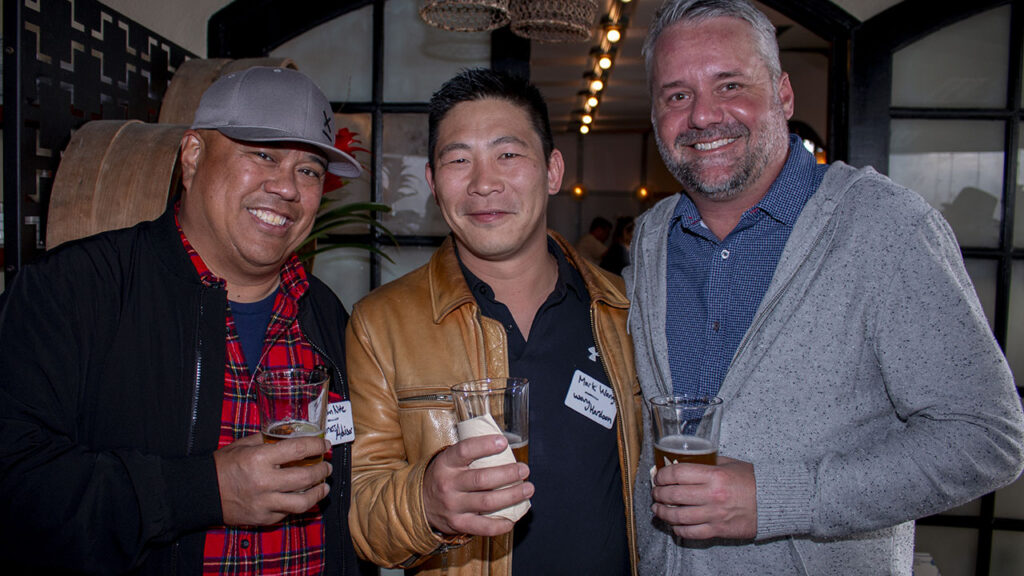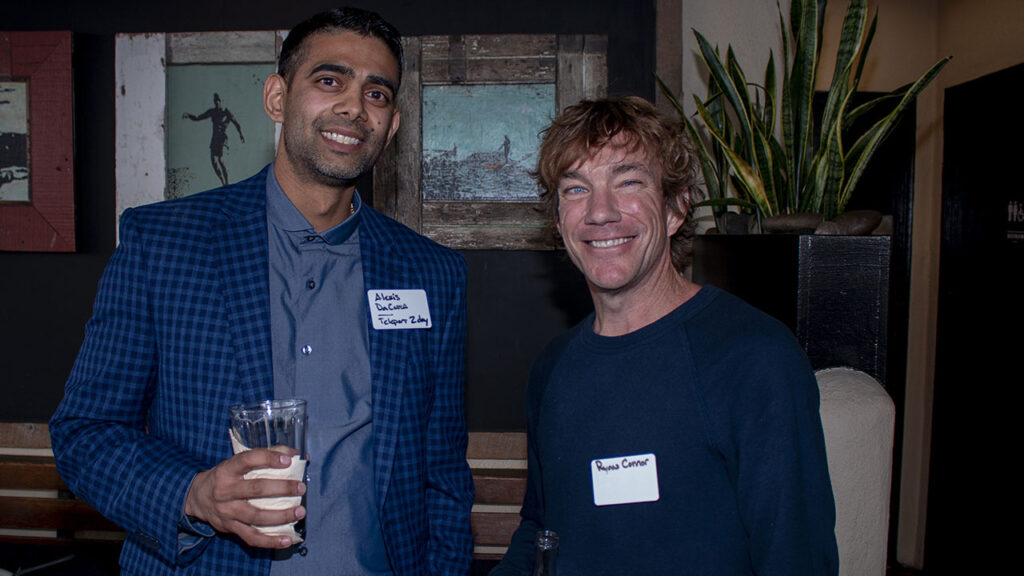Open Source Software (OSS) is commonly used by businesses to provide cost-effective, flexible, and robust solutions for various operational and system needs. Of course, using OSS brings with it various legal considerations and challenges related to licensing and compliance, protection of intellectual property (“IP”), and mitigating risk.
Let’s explore some of those issues as well as a few best practices for addressing them.
What Is an Open Source License?
Open source licenses are legal agreements that dictate how individuals and businesses can use OSS, modify it, and even distribute it. These licenses fall into two general categories: permissive licenses and copyleft licenses.
- Permissive Licenses allow users to freely use, modify, and distribute the software with minimal restrictions. Typically, the only requirement is to attribute the original authors.
- Copyleft Licenses tend to be more restrictive. In essence, the requirement is that if you modify and distribute the software, you must also distribute the source code of the modified version under the same license terms. This ensures the modified software remains open source.
Compliance with Open Source License Requirements
Understanding obligations imposed by an OSS license, such as attribution, disclosure of source code, and distribution requirements is vital so that businesses can avoid legal issues down the road.
Businesses need to ensure that . . .
- All open source components used in their projects are documented. This includes noting the version, license type, and any modifications made to facilitate audits should they occur.
- Appropriate credits to the original software authors are included in any documentation, user interfaces, and distribution packages.
- Modified versions of any software, particularly in the case of copyleft licenses, make the source code available to others.
Managing Risks Associated with OSS
Contributing to open source projects can enhance a company’s reputation and foster innovation. However, it also introduces risks that need careful management:
- Businesses need to develop clear policies regarding employee contributions to open source projects. This includes ensuring that employees understand their obligations, such as not disclosing proprietary information and complying with company guidelines.
- When employees or independent contractors contribute to open source projects, businesses need to use contributor license agreements (CLAs) or contributor assignment agreements (CAAs) to clarify who owns the work contributed to the project and any rights granted.
- Code contributed to an open source project should be of high quality and should not inadvertently include proprietary or confidential company information. Regular code audits are a must to identify and address any potential licensing issues.
Navigating Conflicts with Proprietary Software
Many projects require the use of both OSS and proprietary software. Balancing the use of both can be challenging, especially with the potential for conflicts between different license types.
Some licenses, like the widely used open source General Public License (“GPL”), impose requirements that may conflict with proprietary software distribution. In this case, the GPL requires derivative works to be distributed under the same license, ensuring the software remains free and open source.
Some organizations consider dual licensing for the software they develop. This approach allows them to offer their software under both an open source license and a commercial license. In this way, they can attract open source contributions while also generating revenue from commercial users.
Containerization technology, such as Docker, can help isolate open source components from proprietary software. Such an approach can help businesses manage license compliance and reduce the risk of contamination between open source and proprietary codebases.
IP Considerations When Using OSS
For organizations that use OSS to create IP, the ownership of the IP depends on several factors, including the specific open source licenses involved and how businesses and individuals integrate and modify the open source components.
The implications for IP ownership vary significantly between permissive and copyleft licenses:
- If a business or individual incorporates permissive-licensed OSS into a proprietary product, they generally retain ownership of the IP. The primary requirement is often to provide attribution to the original authors.
- If a business or individual modifies and distributes software under a copyleft license, they must distribute any modifications under the same license terms. This can mean that any derived work must also be open source, which could impact the business’s or individual’s ability to claim exclusive ownership of the IP.
The extent to which a business or individual modifies the OSS can influence IP ownership:
- If OSS is used without modification within proprietary software, the proprietary code typically remains the IP of the business or individual. The OSS retains its original license, and any additional obligations are limited to compliance with that license (such as attribution and providing source code for the open source component if required).
- If the OSS is modified, the nature of the modifications and the license terms will determine a business’s or individual’s IP rights. For permissive licenses, a business or individual generally retains ownership of the modifications. For copyleft licenses, any modifications might need to be released under the same open source license, affecting control over the IP.
Combining OSS with proprietary software can lead to other complex IP-related issues:
- If proprietary software dynamically links to open source libraries (through APIs, for example), the proprietary nature of the software might be preserved.
- Static linking or combining open source code with proprietary code can create a derivative work. For copyleft licenses, this may require businesses or individuals to make the combined code open source, which impacts IP ownership.
- When working with OSS, CLAs, CAAs, and dual licensing models often require certain rights be granted to the original project others, while other rights are granted to individuals and businesses contributing to the project. Understanding those rights and how licensing affects them is critical.
Get Expert Guidance
As with most matters related to intellectual property, the challenges are complex and evolving. Whether your company is developing in-house expertise or collaborating with consultants to get by, having additional specialized legal support at the forefront of OSS licensing and compliance issues is indispensable.
Let’s Work Together: Global Experience, Personal Focus
Ludwig APC can work with your team to leverage education, new technologies, and a keen understanding of IP and business matters to mitigate risks and maximize the benefits of utilizing OSS with your business. Contact us today to arrange a free consultation at (619) 929-0873 or consultation@ludwigiplaw.com.
The entertainment industry has always relied heavily on intellectual property (IP) laws to protect and manage the creative works it produces. However, the rise of digital technology, streaming services, user-generated content, and artificial intelligence (AI) has introduced a host of new challenges and complexities for IP owners.
The Rise of Streaming
The shift from traditional media consumption to streaming services has revolutionized the entertainment industry. Platforms such as Netflix, Disney+, and Amazon Prime have become the primary sources of content for millions of viewers worldwide. This transition brings with it significant IP challenges, particularly in content licensing.
Licensing agreements are the backbone of content distribution in streaming services. These agreements grant streaming platforms the rights to distribute movies, TV shows, and music to their subscribers. Negotiating these licenses can be complex and contentious. Content creators and rights holders seek to maximize revenue, while streaming services aim to acquire content at competitive prices.
Another challenge is the geographical restriction of licenses. Content that is available on a streaming service in one country might be unavailable in another due to regional licensing agreements for any number of reasons, ranging from cultural to geo-political to business practices. Such fragmentation can frustrate consumers and complicate the enforcement of IP rights. Additionally, the trend of exclusive content deals, where a streaming service secures exclusive rights to a particular show or movie, can limit the accessibility of content and lead to intense competition among platforms.
Piracy remains a persistent issue. Even with robust licensing agreements, unauthorized distribution and access to content continue to plague the industry. As a result, streaming services and rights holders have invested in advanced technologies and legal measures to combat piracy and protect their IP.
For example, the rise of Napster in the late 1990s (and its eventual fall) revolutionized music consumption by enabling easy file-sharing—but it also led to widespread piracy, challenging traditional IP enforcement. Napster’s popularity pressured the music industry to innovate, paving the way for legal streaming services such as Spotify and Apple Music. These platforms transformed IP management by establishing new licensing models that offered artists revenue and consumers affordable, legal access to vast music libraries.
The Explosion of User-Generated Content
Platforms such as YouTube, TikTok, and Instagram allow users to produce and share their own videos, music, and artwork. Such content creation is no longer the purview of the mega studios and the artists they support. While this has led to an explosion of creativity, it has also created significant challenges for IP rights management.
User-generated content often incorporates copyrighted material, such as music tracks, movie clips, and images. This raises questions about fair use and copyright infringement. Content creators might not always seek permission to use these materials, leading to potential legal disputes with the original rights holders.
To address this issue, various platforms have implemented Content ID systems. These systems automatically detect copyrighted material in user-generated content and either block it, monetize it for the rights holder, or allow it to remain with attribution. While this technology helps manage IP rights, it is not without its flaws. False positives and disputes over fair use are common.
Another approach to managing rights for user-generated content is the development of revenue-sharing models. By allowing content creators and rights holders to share the revenue generated from ads or subscriptions, platforms can incentivize the legal use of copyrighted material while ensuring that rights holders are compensated accordingly.
The Impact of Artificial Intelligence
Artificial intelligence (“AI”) is transforming the entertainment industry in profound ways. AI algorithms are now capable of creating music, writing scripts, and even generating realistic deepfake videos. This raises questions about authorship and IP ownership. If an AI creates a piece of music or a video, who owns the rights to that work? The developer of the AI? The user who prompted it? Or is it considered public domain?
AI is also playing a crucial role in content distribution. Streaming services use AI to recommend content to users based on their viewing history and preferences. These recommendation systems are critical for retaining subscribers and driving engagement. However, they also raise privacy concerns and ethical questions about data usage.
Where to from Here?
The entertainment industry and we content consumers are at a crossroads. Content is more readily available than ever, and in most cases it’s on-demand. There’s no more waiting for repeats of our favorite TV shows only once a year or hoping to hear a favorite song on the radio. For the most part, we can now watch or listen to what we want when we want to.
All this increased access and additional outlets for creativity require careful consideration and enforcement to ensure fair compensation to the creators and owners of the IP. Additionally, rights management for user-generated content and the rise of AI in content creation and distribution presents both exciting opportunities and complex ethical dilemmas.
As the entertainment industry, consumer tastes, and technology continue to evolve, we are faced with the need to develop proactive and innovative solutions to address various challenges. It’s more crucial than ever for IP owners, policymakers, and tech developers to have someone on their team—like Ludwig APC—who understands the complexities of evolving legal frameworks as well as IP, technology, and business matters.
Let’s Work Together: Global Experience, Personal Focus
We invite you to contact us today to arrange a free consultation at (619) 929-0873 or consultation@ludwigiplaw.com. We’ll explore how we can help you protect your IP rights while also fostering innovation and accessibility in the entertainment industry.
With our lives becoming more and more digital-centric, data privacy regulations and intellectual property (IP) rights have become a focal point of legal, ethical, and economic considerations in recent years.
Traditionally, IP laws have provided a framework for delineating ownership rights over tangible creations such as copyrights and trademarks, so the intangible nature of “data” presents a unique challenge. Many argue that while personal data defies conventional IP labeling, its intrinsic value and susceptibility to exploitation make it worthy of protection.
As individuals, we generate vast troves of personal data through our interactions with organizations and through various online activities. This data often has significant commercial value to businesses for targeted advertising, market analysis, or algorithmic decision-making.
This raises questions about data ownership and control. Naturally, with Ludwig APC’s expertise in privacy law and intellectual property, this area is of particular interest to us and to our clients.
Whose Data Is It?
Organizations often invest significant resources in collecting, analyzing, and leveraging the data they collect to innovate, make strategic decisions, and enhance products and services. They see this data as valuable proprietary information, arguing that they have legitimate interests in gathering and utilizing it, especially in cases where it contributes to their IP assets or business operations.
Conversely, individuals consider data gleaned through their browsing habits, social media interactions, ecommerce, and other online activities, to be their personal information—not something organizations can own or manipulate as their own.
Who’s right?
In many cases, personal data is not explicitly classified as IP in the traditional sense of patents, copyrights, or trademarks—at least not yet. However, there are emerging legal interpretations that recognize personal data as a form of IP deserving of protection.
Balancing Acts
Data privacy regulations such as the General Data Protection Regulation (GDPR) in Europe and the California Privacy Rights Act (CPRA) in the United States have significantly reshaped how organizations collect, use, and manage personal data, often necessitating organizations to change their data handling practices and IP management strategies.
Both the GDPR and CPRA affirm the rights of individuals to control their data, introducing concepts such as the right to access, rectify, or delete it. It’s an attempt by regulators to rebalance the scales by prioritizing user privacy and giving individuals greater control over how their data is stored and/or used by others.
At the same time, organizations are staking claims to the data generated within their digital environments as a form of IP, often leveraging contractual agreements and user terms of service to assert ownership.
Safeguarding Data
As organizations grapple with regulatory compliance while also asserting and protecting it as IP, safeguarding the data becomes essential.
Unauthorized access, breaches, or leaks of sensitive data can compromise valuable assets, including trade secrets, proprietary algorithms, user demographics, sales and buying habits data, research findings, and more. Strong data protection measures, such as encryption, anonymization, access controls, and regular audits, are fundamental for preserving the confidentiality and integrity of stored data.
Failure to comply with various regulations to protect data not only exposes organizations to legal risks and financial penalties, but also undermines trust and reputation with the public. Thus, collaboration between legal, technical, and compliance stakeholders is vital for upholding both individual privacy and IP imperatives.
Monetization of Data
Personal data is frequently treated by organizations as a commodity, subject to aggregation, analysis, and monetization. From targeted advertising to personalized services, organizations often harness this personal data to drive revenue and gain competitive advantage.
This monetization of personal data raises both ethical and legal concerns. While individuals have gained some legal rights to control of their personal data under data protection laws, enforcing those rights can be challenging.
Even with regulations imposing strict limitations on the commercial exploitation of personal data, individuals may still feel uneasy knowing their information is being monetized without their full understanding or consent.
By embracing and publicizing ethical data monetization practices, organizations can go a long way toward fostering greater trust and transparency.
Ethical Considerations
Ethical frameworks underscore fundamental principles such as consent, transparency, and accountability in the collection, use, storage, and processing of personal data. For the most part, organizations that collect the data bear the responsibility to safeguard privacy, prevent misuse, and ensure its security.
Despite individuals ostensibly having control over their data, the reality is often different once the data has been shared with organizations. For example, terms of service agreements and privacy policies, largely ignored by users, may confer sweeping rights to organizations, fueling individual apprehension about transparency and accountability.
Unethical practices such as unauthorized data collection or exploitation, or shoddy security measures, can further erode public goodwill with certain organizations and invite stricter regulatory oversight.
Let’s Work Together: Global Experience, Personal Focus
Empowering individuals and organizations with greater control and agency over the handling of personal data is crucial for promoting privacy, autonomy, and trust in today’s digital age.
Ludwig APC’s Eric Ludwig is experienced trial lawyer and certified privacy professional with an extensive background in intellectual property, business litigation, privacy, data security, and technology matters. He provides individuals and organizations the guidance and support they need to navigate evolving and complex compliance, privacy, and IP issues.
We invite you to contact Ludwig APC to arrange a free consultation at (619) 929-0873 or consultation@ludwigiplaw.com.
The latest edition of “The Gathering,” hosted by yours truly, Eric Ludwig, and Paul June of Barrel O’Monkeyz was a great success. Paul and I have known each other for more than 30 years. We’re friends, and business colleagues, and we both believe that when you gather the right group, anything can happen!
That’s the idea behind The Gathering—plus of, course, the fact that Paul and I each have three young daughters at home who bring us much joy and occasional madness, so an occasional night out does us good. In all seriousness, The Gathering reflects our desire to create a quarterly event where friends, clients, and team members can come together to share stories and create new ones.
This isn’t just another networking event, though. “The Gathering” prioritizes genuine connections and meaningful discussions fireside-chat style. Guests show up, we drop titles, and we sit gather as equals. There is food and drink, plus plenty of food for thought.
We explore topics ranging from AI and ChatGPT to branding and marketing to various industry updates, as well as what’s going on with us personally. Most of all, The Gathering is an opportunity for attendees to share insights, exchange ideas, and get to know each other a little better.
We’re excited to see “The Gathering” community continue to grow. Whether you’re a seasoned professional or just starting your journey, “The Gathering” offers a welcoming environment where everyone has a voice.
Scenes from Our Most Recent Event













If You’re Interested, Join Our Mailing List
If you’re not already part of Ludwig APC’s mailing list, subscribe now in the sidebar of this page so you don’t miss out on future updates and exclusive invitations to events.
- You will leave full of food and insights.
- There will be opportunities to learn and teach.
- Actionable insider intel will be conveyed.
- Non-linear pathways will be exercised.
- You won’t get burned.
(619) 929-0873 | consultation@ludwigiplaw.com.
